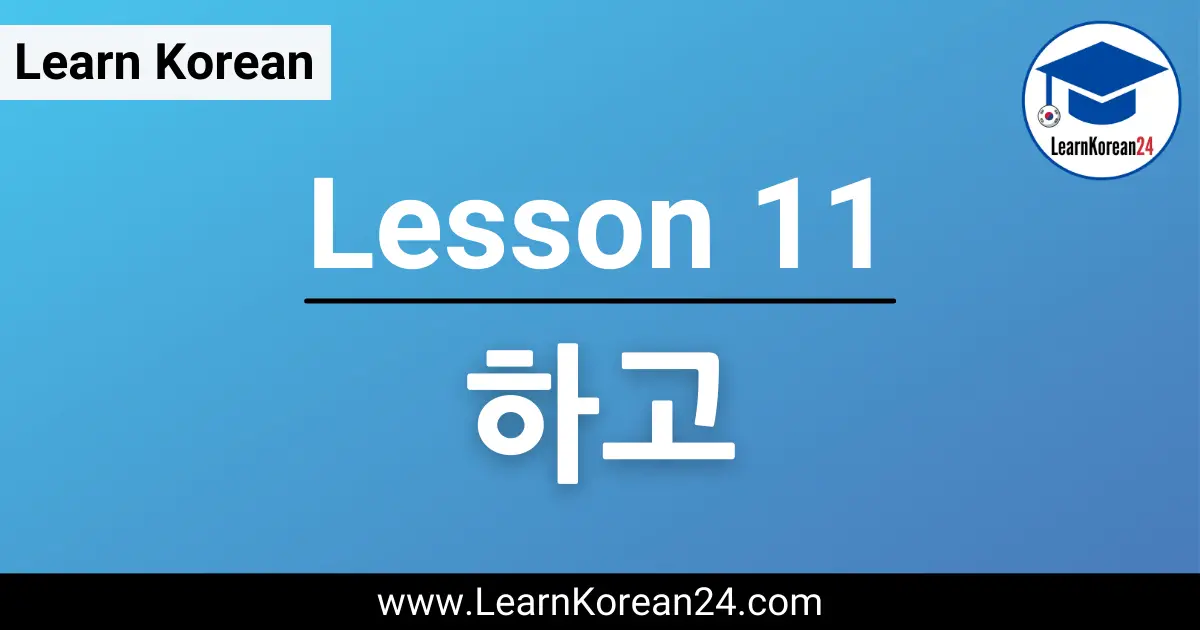Lesson 11: 하고
In this lesson, you will learn how to use ~하고 [ha-go], which means ‘and’ or ‘with’, to say things like “I bought an apple and a banana.” and “I went to Busan with my friend.“
Lesson 11: 하고
Usage 1: And
To use 하고 [ha-go] to say ‘and’ in a sentence with two nouns, attach 하고 to the first noun without a space. After 하고, there is a space before the second noun. Here are some examples:
사과하고 바나나 [sa-gwa-ha-go ba-na-na] = an apple and a banana
빵하고 우유 [ppang-ha-go u-yu] = bread and milk
하고 can also be used with more than two nouns if you are listing many things. In English, when listing things like this ‘and’ is only placed before the final noun (Bread, milk, and cheese). However, in Korean, 하고 is placed between each noun (빵하고 우유하고 치즈).
Usage 2: With
하고 can also mean ‘with (someone)’ in some contexts. Again, 하고 is placed after the first noun without any space. Here are some examples:
친구하고 [chin-gu-ha-go] = with my friend.
어머니하고 동생하고 [eo-meo-ni-ha-go dong-saeng-ha-go] = with my mother and my younger brother/sister
아버지하고 어머니하고 동생하고 [a-beo-ji-ha-go eo-meo-ni-ha-go dong-saeng-ha-go] = with my father, my mother, and my younger brother/sister
Example Sentences
As you can see, it is really easy to make longer sentences using 하고. Here are some example sentences using 하고:
사과하고 바나나를 먹었어요. [sa-gwa-ha-go ba-na-na-reul meo-geo-sse-yo] = I ate an apple and a banana.
빵하고 우유하고 치즈를 샀어요. [ppang-ha-go u-yu-ha-go chi-jeu-reul sa-sseo-yo] = I bought bread, milk, and cheese.
친구하고 부산에 갔어요. [chin-gu-ha-go bu-sa-ne ga-sseo-yo] = I went to Busan with my friend.
어머니하고 동생하고 영화를 봤어요. [eo-meo-ni-ha-go dong-saeng-ha-go yeong-hwa-reul bwa-sseo-yo] = I watched a movie with my mother and my younger brother/sister.
STUDY ONLINE WITH KOREAN ARAH!
Ready to take your Korean to the next level?
Get One-on-One Korean lessons from a qualified and experienced Korean language tutor!

